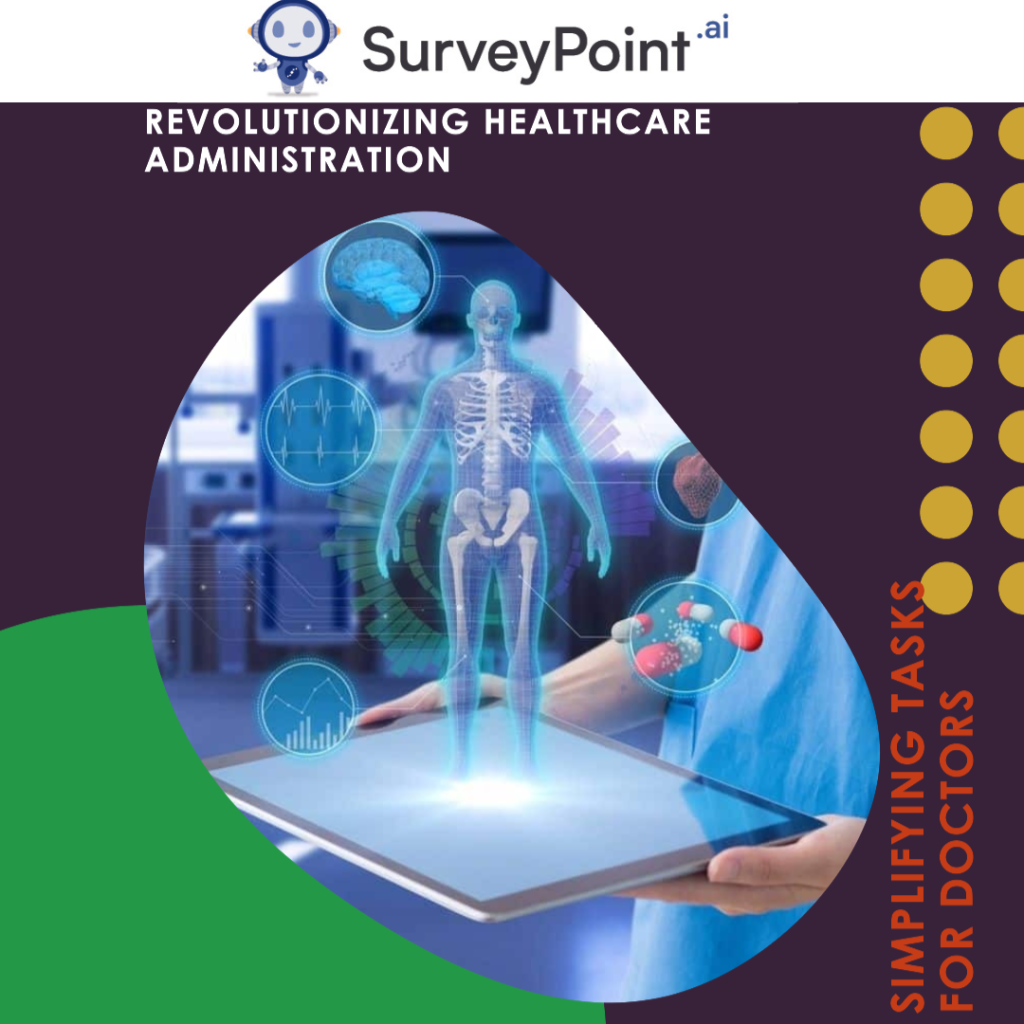The medical profession has long been burdened with a significant administrative load, from endless paperwork to complex documentation processes. However, there is a fundamental shift taking place in the healthcare sector that will streamline administrative tasks for doctors. Innovative tactics and technological advancements that aim to streamline processes, increase productivity, and lessen the administrative burden on physicians are at the forefront of this revolution.
In this article, we will delve into the world of healthcare administrative tasks and explore the myriad ways in which technology is simplifying the lives of healthcare professionals. From electronic health records (EHR) to efficient data entry, we will dissect the strategies and digital tools that are making a positive impact on medical practice efficiency.

The Paperwork Predicament
Physicians and healthcare professionals have traditionally grappled with a massive amount of paperwork, which often detracts from their primary focus: patient care. The administrative tasks include patient records, insurance claims, billing, and compliance documentation. These tasks are not only time-consuming but also prone to errors, leading to inefficiencies in healthcare settings.
The administrative burden not only affects the quality of care but also contributes to physician burnout, a growing concern in the medical field. Recognizing these challenges, healthcare stakeholders have been actively seeking ways to reduce the paperwork stress for physicians.
Electronic Health Records (EHR): A Game-Changer
One of the most significant advancements in healthcare administration is the adoption of electronic health records (EHR). EHR systems digitize patient records, providing healthcare professionals with a streamlined and accessible platform for managing patient data. This shift from paper-based records to digital solutions has numerous benefits.
EHR systems enhance accuracy by reducing the risk of human errors in documentation. They also improve data security and accessibility, enabling healthcare providers to access patient information quickly and securely. Additionally, EHRs support interoperability, allowing different healthcare systems to communicate seamlessly.
Data Entry Efficiency
Efficient data entry is at the heart of minimizing paperwork for healthcare providers. Technology-driven solutions, such as voice recognition software and mobile applications, are being employed to simplify the data entry process. Physicians can dictate patient notes, which are then transcribed accurately into digital records, saving time and reducing the need for manual typing.
Moreover, data entry automation tools can extract relevant information from various sources, reducing the effort required for inputting data. These advancements in data entry efficiency not only reduce paperwork but also allow physicians to focus more on patient care.
Telemedicine and Virtual Health Records
Telemedicine has gained significant traction, especially in recent times, as a means to streamline administrative tasks for physicians. Virtual health records, accessible through secure online platforms, facilitate remote patient consultations and information sharing. This not only reduces the need for physical paperwork but also enables healthcare professionals to connect with patients more conveniently.
Telemedicine appointments can be documented digitally, eliminating the need for physical charts or forms. Moreover, integrated telehealth platforms often come with automated billing and appointment scheduling features, further reducing administrative tasks and paperwork.
Paperwork Reduction Strategies
Implementing paperwork reduction strategies is essential to the healthcare industry’s pursuit of efficiency. Medical practices are increasingly embracing digital documentation and communication tools, such as secure messaging apps and patient portals, to streamline administrative tasks.
Additionally, staff training and education on efficient documentation practices are crucial. Ensuring that healthcare professionals are well-versed in using EHR systems and other digital tools can significantly reduce the time spent on administrative tasks.
- Minimizing Compliance Documentation
Compliance documentation, while crucial for legal and regulatory reasons, can become a significant source of paperwork stress for physicians. Technology solutions, such as compliance management software, automate the process of tracking and documenting compliance requirements.
These tools provide alerts and reminders, ensuring that healthcare professionals stay up-to-date with the latest regulations without the need for extensive paperwork. Moreover, they can generate compliance reports quickly, simplifying the auditing process.
- Billing Efficiency
Billing is a critical aspect of healthcare administration, and it often involves complex paperwork. However, digital solutions have revolutionized the billing process. Medical billing software automates billing tasks, generates accurate invoices, and tracks payments seamlessly.
Furthermore, these systems can integrate with EHRs and insurance databases, reducing data duplication and errors. Streamlining billing not only saves time but also ensures that healthcare providers receive timely payments.
- Paperless Initiatives
Many healthcare facilities are actively pursuing paperless initiatives to reduce their environmental footprint and minimize paperwork. These initiatives encourage the digitization of all documentation processes, from patient records to prescriptions.
Going paperless not only benefits the environment but also leads to significant cost savings in terms of paper, printing, and storage. Additionally, it promotes the efficient use of digital tools and encourages the adoption of EHR systems.
Enhanced Patient Engagement
Improved patient engagement is an indirect yet valuable outcome of streamlined administrative tasks. Digital patient portals and mobile apps empower patients to access their health records, schedule appointments, and communicate with healthcare providers conveniently.
By engaging patients in their healthcare journey and providing them with easy access to their medical information, healthcare professionals can reduce the administrative burden associated with answering patient inquiries and managing appointments.
Future Trends
The transformation of healthcare administration through technology is an ongoing process. Future trends in the field include the use of artificial intelligence (AI) and machine learning to further automate administrative tasks, as well as the integration of wearable devices and IoT technologies for real-time health monitoring and data collection.
Conclusion
In conclusion, the healthcare industry is making significant strides in streamlining administrative tasks for physicians. Digital solutions, EHR systems, data entry efficiency tools, and telemedicine are reshaping the way healthcare professionals manage paperwork. As these innovations continue to evolve, physicians can look forward to a future with reduced administrative burdens, allowing them to focus more on what truly matters—providing exceptional patient care. The journey towards a more efficient and less paperwork-intensive healthcare system is well underway, and the benefits for both healthcare providers and patients are undeniable.

